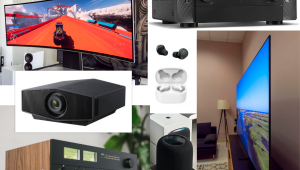Unanticipated Problems Cloud DTV Rollout
In its analysis of the transport streams of 21 US digital TV stations, Triveni Digital found many errors that could lead to video or audio dropouts or other types of reception errors, especially delays in locking onto a station. Among the findings: 48% of the streams had audio buffer errors, which could cause the sound to be out of sync with the image; 39% had "missing PSIP tables or syntax errors," which could cause DTV receivers to fail to access electronic program guides (EPGs); 17% had "PCR jitter and frequency deviation," which could prevent receivers from synchronizing with encoders; and 9% had video buffer errors, which could degrade picture quality or cause apparent audio sync errors. The study covered 11.4% of the 185 DTV stations now operating in the US.
"These results were disappointing," said Mark Simpson, president and CEO of Triveni Digital. The company manufactures a "digital broadcast solution," called the "StreamDoctor," that purportedly corrects such glitches. "While the FCC does not mandate transport stream compliance, the specification is part of the ATSC's DTV specifications, and errors can have a detrimental effect on viewers' being able to watch a DTV program," Simpson added. "Based on our findings, we have decided to extend the StreamDoctor service on a commercial basis to TV stations and system integrators." Triveni Digital is a unit of LG Electronics, parent company of Zenith.
Tuner and sync problems aren't the only difficulties facing HDTV fans. Recent decisions by film studios regarding digital content protection may render some early generation HD equipment partially obsolete, according to a July 26 report in the Los Angeles Times.
Because of uncertainty about broadcasting standards, electronics manufacturers chose to make most early HD equipment as "separates": stand-alone monitors with optional tuners or receivers which could be upgraded or replaced later as broadcasting issues were resolved. (Consumer Electronics Association statistics confirm that most purchasers of HD monitors use DVD players as their primary video source.) Most of the initial debates over transmission standards have now been settled, but a content-scrambling system (Digital Transmission Content Protection, or DTCP) offered by five electronics companies (Hitachi, Toshiba, Sony, Matsushita, and Intel) may mean that owners of early generation DTV gear may not be able to receive some DTCP-encoded programming.
DTCP is intended to prevent home recording of encrypted programming. Sony Pictures Entertainment Inc. and Warner Bros. have already signed on for DTCP, which means that their movies may soon appear as digital broadcasts, especially among the offerings of direct broadcast satellite services EchoStar and DirecTV. Other film studios are considering becoming DTCP licensees.
Because DTCP is a recent development, earlier equipment could not possibly have been designed to accommodate it. Owners of such gear will face either upgrading their receivers or watching DTCP-encoded films in less than HD levels of resolution—one DTCP specification calls for "down-rezing" the HDTV image sent to receivers not equipped for the technology. Any such image "would be better than a standard analog picture, but it wouldn't be high resolution," according to Times writer Jon Healey. DTCP-compliant products will arrive later this year, all of them equipped with IEEE 1394 ("FireWire") connectors.
























































